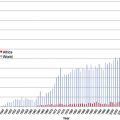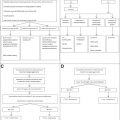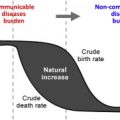

The first article, by Roberts and Weatherall, emphasizes the multifactorial complexity of blood disease in the developing countries, paying particular attention to their modification by nonhematologic disorders, particularly infection. The next article, by Kassebaum, provides a recent updated account of the global burden of anemia based on the Global Burden of Disease program. Pasricha and Drakesmith consider the continuing problems of both the diagnosis and the treatment of iron deficiency, the commonest cause of anemia. The next three articles discuss various aspects of the inherited disorders of hemoglobin, which are the commonest monogenic diseases and which occur at particularly high frequency in many of the developing countries of the tropical belt. The article by Luzzatto and colleagues deals with the problem of another extremely common genetic disease, glucose-6-phosphate dehydrogenase deficiency, particularly in its relationship to severe drug reactions and its role in the pharmacology of Plasmodium vivax malaria. Roberts’ article deals with the complex hematologic findings related to common infections, particularly those in tropical regions, while the article by Lehmann and colleagues covers the widespread variability in the forms of malignant hematologic disorders. The next two articles provide coverage of the patterns of hematologic disorders in South and Southeast Asia. The article by Makani and Roberts discusses the current complexities and diversity of hematologic practice in sub-Saharan Africa. The article by Roberts and colleagues deals with the problems and approaches for developing blood transfusion programs in the developing countries, while the last article, by Allen and colleagues, describes the role of partnerships between the richer and poorer countries for training and capacity building for developing their hematologic programs.
Since descriptions of the global aspects of hematology are few and far between, we hope that our readers will enjoy this account, particularly those who are considering forming partnerships with the developing countries or North/South partnerships as they are called by the World Health Organization. Already some progress has been made toward these developments and, as reported in the article by Fucharoen and Weatherall, at least a start has been made toward the evolution of South/South partnerships that is between poorer countries who have begun to develop their hematology programs after which they form partnerships with adjacent countries where no progress has been made in this field; the Asian Thalassemia Network is a good example. It is also hoped that these issues will be made available to the major international health agencies and charities, as is clear from several of the articles that financial aid is essential if good hematologic practice can be developed in the poorer countries of the world.
Stay updated, free articles. Join our Telegram channel

Full access? Get Clinical Tree







